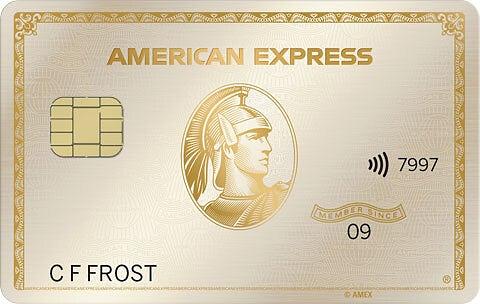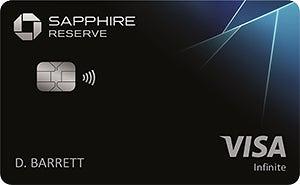Cash News
To say that credit cards are popular is an understatement. The overwhelming majority of Americans — 82% — have at least one credit card, though millions of people juggle multiple cards. According to Experian, Americans have an average of 3.84 cards and an average credit card balance of $6,365 per person as of 2023.
But when were credit cards invented? Credit cards have a lengthy history, and they’ve changed quite a bit since their introduction in the early 1900s.
When were credit cards invented? A timeline
Buying on credit is nothing new — merchants have allowed customers to buy items and pay the bill later for centuries. Credit cards formalized the process, giving customers a physical card and credit limit to use at retailers. But since their launch, they have evolved significantly.
Below is a brief timeline of credit card history:
Early 1900s: The first credit cards are introduced
The first credit cards were launched in the early 1900s by department stores and oil companies. However, these cards are more similar to today’s store cards than traditional credit cards because they could only be used at specific stores.
1950s: Charge cards are launched
Credit cards that function like store cards gained popularity, particularly cards issued by department stores and restaurants. These cards were primarily for wealthy individuals who wanted to avoid carrying bills.
The Diner’s Club card was launched in 1950 after its founder forgot his wallet while at a restaurant; it was launched as an easy way to pay for restaurant meals without cash. And in 1958, American Express launched its first charge card.
At the end of the decade, credit cards that allowed for revolving balances — rather than charge cards, which must be paid in full every month — were introduced.
1960s: The first general card is created
In 1966, the BankAmericard was introduced as the first general-use credit card, meaning it was the first card not tied to a specific restaurant or department store chain.
As the BankAmericard and other options grew in popularity, the government began to pay more attention to the industry. In 1968, the Truth in Lending Act was passed, standardizing how credit card account terms had to be disclosed. It created a uniform system of disclosures and terms so customers could easily compare their options and determine what they would be charged.
1970s: Regulatory changes are passed
The 1970s were a period of substantial change for the credit card industry, and there were several major regulatory measures passed. For example:
-
The Fair Credit Reporting Act was passed, which changed how credit information was collected and reported. It set what types of information and data the credit bureaus collects, such as a person’s payment history for their bills, current debt, and past loans. It also limits who can access an individual’s credit report; for example, allowing insurance companies to review an applicant’s credit before issuing them a policy.
-
The Unsolicited Credit Card Act of 1970 prohibited companies from sending active credit cards to pre-approved candidates who didn’t apply for them.
One of the biggest shifts occurred with the passing of the Equal Credit Opportunity Act of 1974. Previously, women could qualify for credit cards, but it was difficult. Banks routinely declined female applicants — even if a woman had her own income — unless they had a male co-signer, such as a husband, father, or brother.
The Equal Credit Opportunity Act prohibited banks and credit card companies from discriminating against applicants due to gender or marital status.
1980s: Credit cards offer rewards
Until the 1980s, credit cards were simple; they were a way to purchase items with a revolving line of credit, but that was their only function. That changed in the 1980s with Discover Financial Services’ launch of the first rewards credit card.
Discover credit cards today, such as the Discover it® Cash Back and Discover it® Miles, still have a lot to offer cardholders seeking rewards on their spending.
1990s: The first travel cards are introduced
During the 1990s, credit card issuers began to focus on travel rewards. American Express launched Membership Miles — the precursor to today’s Amex Membership Rewards Points — which allowed customers to earn points on purchases redeemable with partner airlines. Today, Membership Rewards-earning cards like the American Express® Gold Card (see rates and fees) and The Platinum Card® from American Express (see rates and fees) are among the highest-value premium travel cards available.
Cards also began using EMV (Europay, Mastercard, and Visa) tech, storing card information on an embedded microchip as a security measure.


Read more: See our picks for the best American Express credit cards
2000s: Premium travel cards hit the market
As rewards and travel cards skyrocketed in popularity, issuers launched new premium credit cards with higher annual fees but premium benefits, such as airport lounge access. Premium rewards cards are still popular now, such as the Chase Sapphire Reserve® or Capital One Venture X Rewards Credit Card. Some co-branded travel cards, like the United Club℠ Infinite Card and Delta SkyMiles® Reserve American Express Card (see rates and fees), also have premium perks for travelers.
In 2009, the Credit Card Accountability Responsibility and Disclosure Act was passed. This bill limited how much companies could hike interest rates, requiring issuers to give customers 45 days notice before changing rates or fees.


2010s: Digital payments grow
During the 2010s, more and more people utilized touchless payment methods, including digital wallets and payments.
Companies adapted to new technologies, allowing customers to check out at the register by simply tapping their card.


Related: The best Chase cards available today
Credit cards today
Credit cards have come a long way since their humble beginnings. There are now multiple credit card networks — the four best-known are Visa, Mastercard, Discover, and American Express — and thousands of issuers, including banks, credit unions, and other financial institutions.
With all that variety, there’s no shortage of different card types to fit your financial needs throughout life. For example, you could use a card like Chase Slate Edge® to pay down debt via balance transfer, the Capital One Quicksilver Cash Rewards Credit Card to maximize cash back on everyday spending, and Hilton Honors American Express Card (see rates and fees) to save on hotel stays when you travel.
This article was edited by Rebecca McCracken
Editorial Disclosure: The information in this article has not been reviewed or approved by any advertiser. All opinions belong solely to Yahoo Finance and are not those of any other entity. The details on financial products, including card rates and fees, are accurate as of the publish date. All products or services are presented without warranty. Check the bank’s website for the most current information. This site doesn’t include all currently available offers. Credit score alone does not guarantee or imply approval for any financial product.

